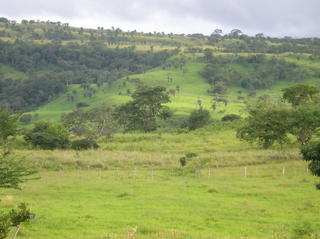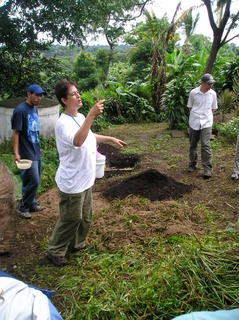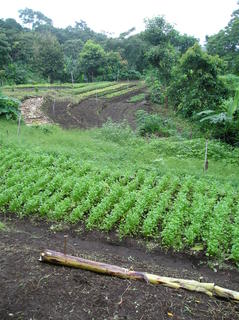Weeks 5,6-half way!
We're about halfway through training - and the second half should fly by with placement interviews, the site fair (where we learn about the communities we'll be serving in), our site assignments, and site visits! Everyone's excited to learn where we'll be living for the next two years. We're all kind of like kids counting down the days until Christmas...only 10 more to go!
In week 5, all trainees got a three day visit with a volunteer currently serving. I visited Marissa, who has lived in the department of Chontales for about a year. It's about 4 hours east of Managua. She was a great host and showed me all around her town and the surrounding area.Marissa taught me to make tortillas - funny thing to learn from a fellow gringa. Though we did eat Nica food most of the time I was there, we also made French toast one night for dinner - with Aunt Jemima syrup. Who says the Peace Corps is tough?
Cultural misunderstanding no 349: Marissa graded the pictures her students had drawn that day about " A World Without Trees." She drew a star on the top of each one, like many primary school teachers do. When she finished, Cilas, one of the neighborhood boys who was hanging out at the house came over to take a look, sighed, and said "Todos faltaban estrellas" (They all forgot to draw a star).The landscape is breathtaking in Chontales - the rainy season lasts around 9 months - which accounts for the million and one shades of green. We were lucky though, while I was there - it hardly rained at all. I guess, though, I should mention that my definition of rain has changed since I came to Nicaragua. Sprinkles doesn't count. Neither does any precipitation that lasts less than one hour, regardless of how hard it is.
Marissa's friends own a ranch nearby and they took us horseback riding for a few hours! Yee-haw! This is Efrain and I. My horse doesn't have a name - they just call it "la yegua" - the mare.
Some of the amazing flowers that we came across on our ride:
One of our training days entailed of a visit to a local organic farm near Managua, run by a woman named Rosario. Here she is explaining how to turn organic matter, ash, soil, and cow poop into compost.Her farm is very successful particularly because she has a deal with a local Korean restaurant. They provide her with seeds, and she supplies them with vegetables. Besides learning composting techniques, we also learned how to make natural pesticides.
Check out the adventitious roots on that bad boy:
Rosario's farm not only had exotic vegetables, but lots of local plants and trees. I've seen cacti here and have yet to understand how they survive in such a water rich environment. Hmmmmmm...
Natural, renewable, AND sustainable:Thanks everyone for cards and letters - keep them coming!














0 Comments:
Post a Comment
<< Home